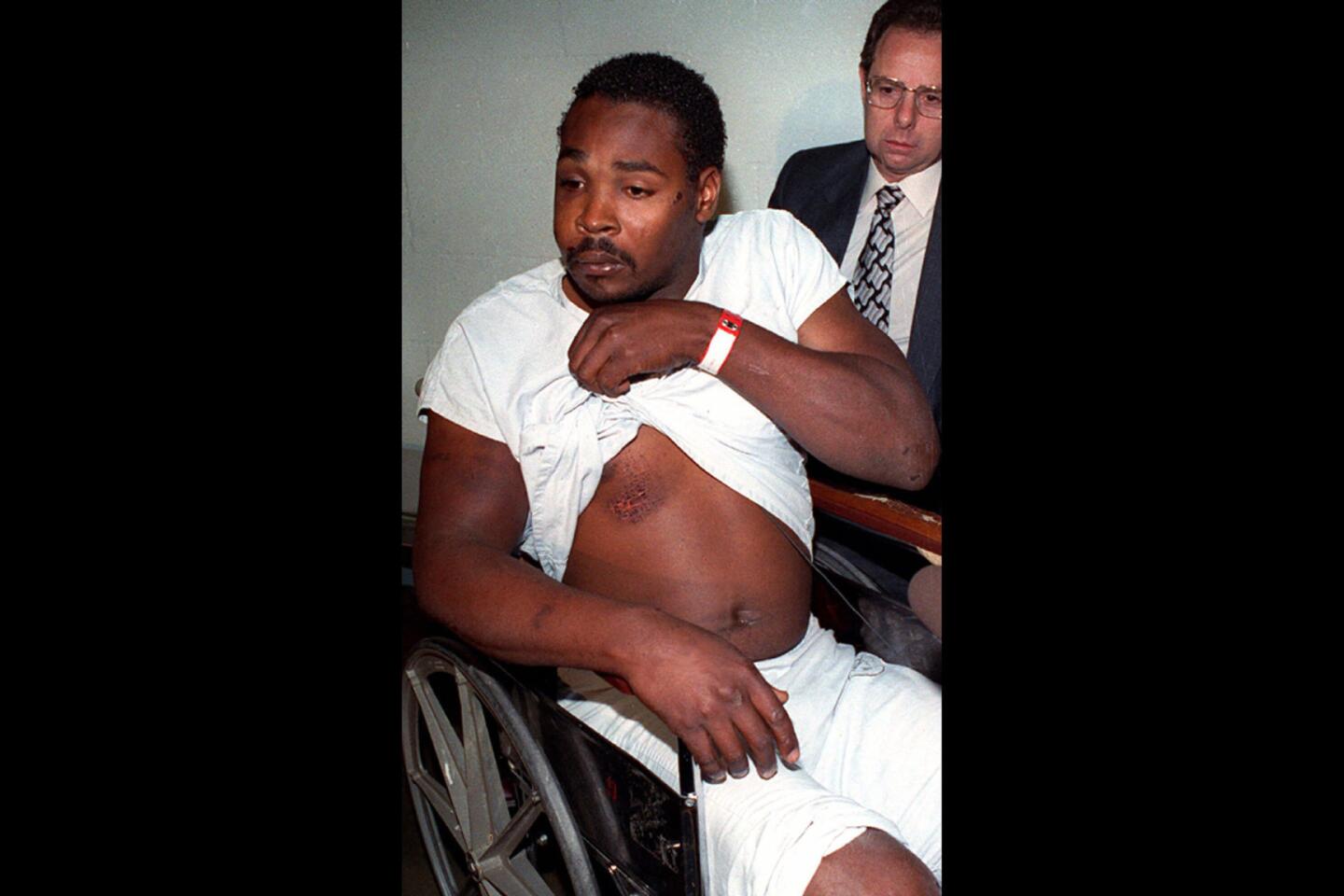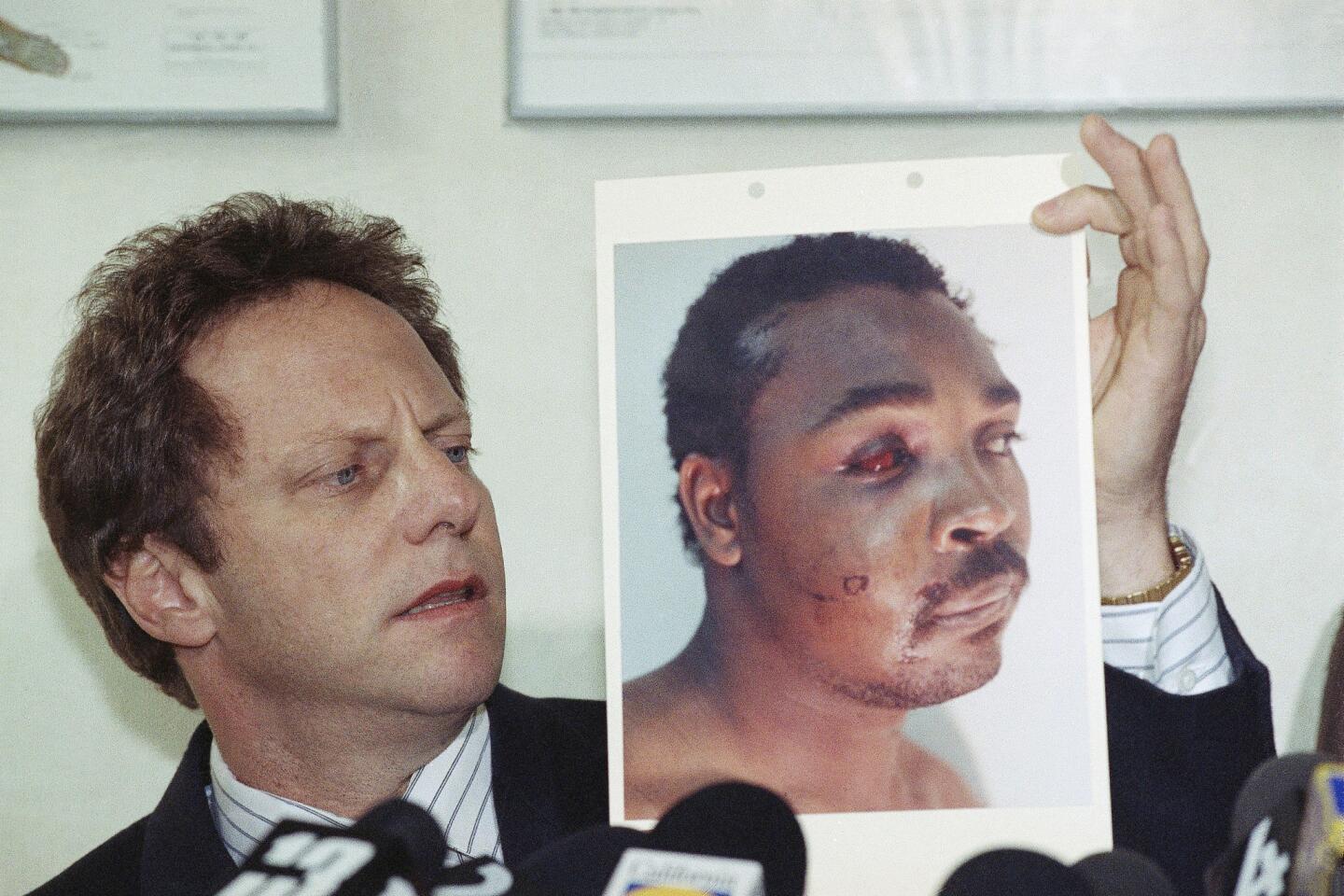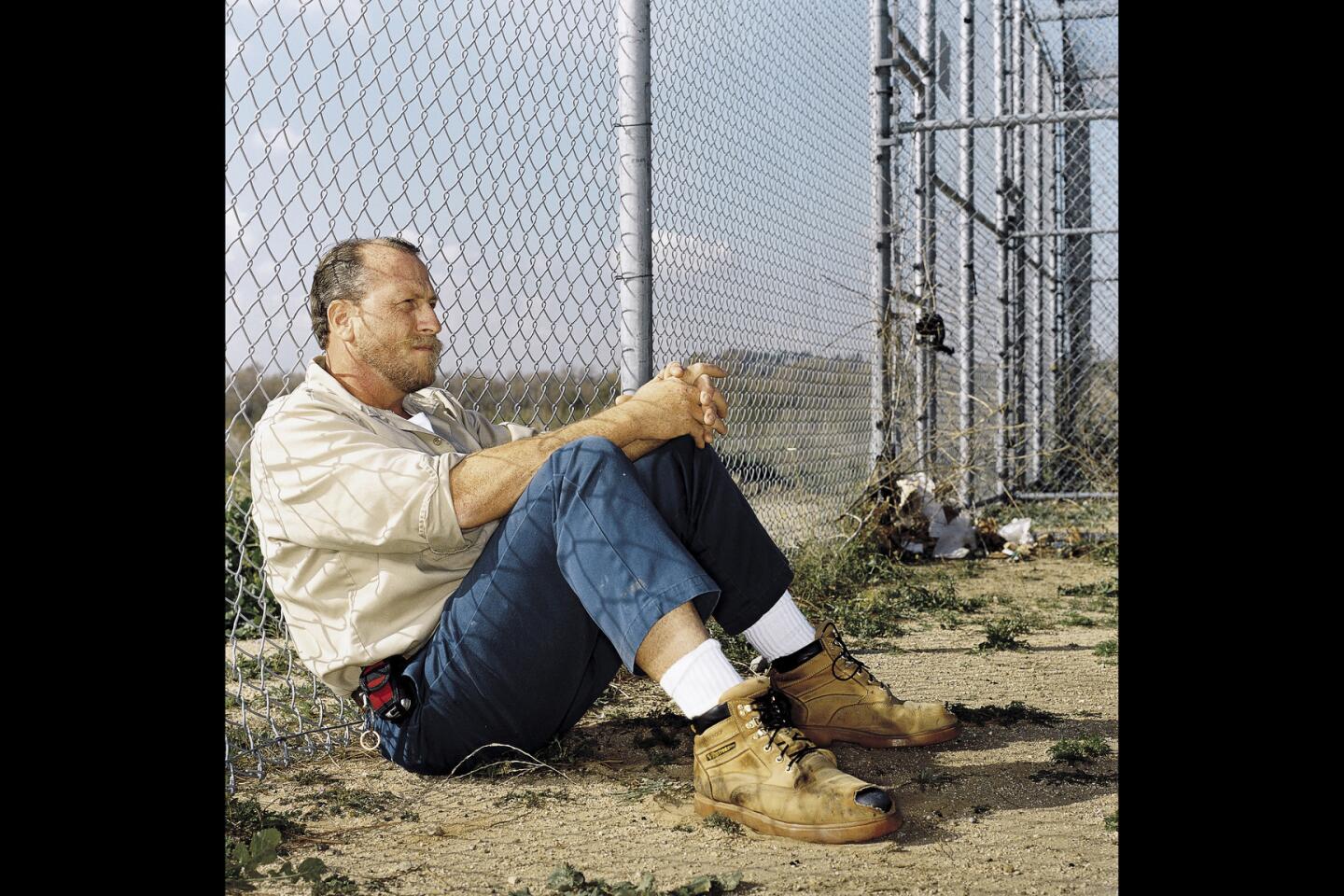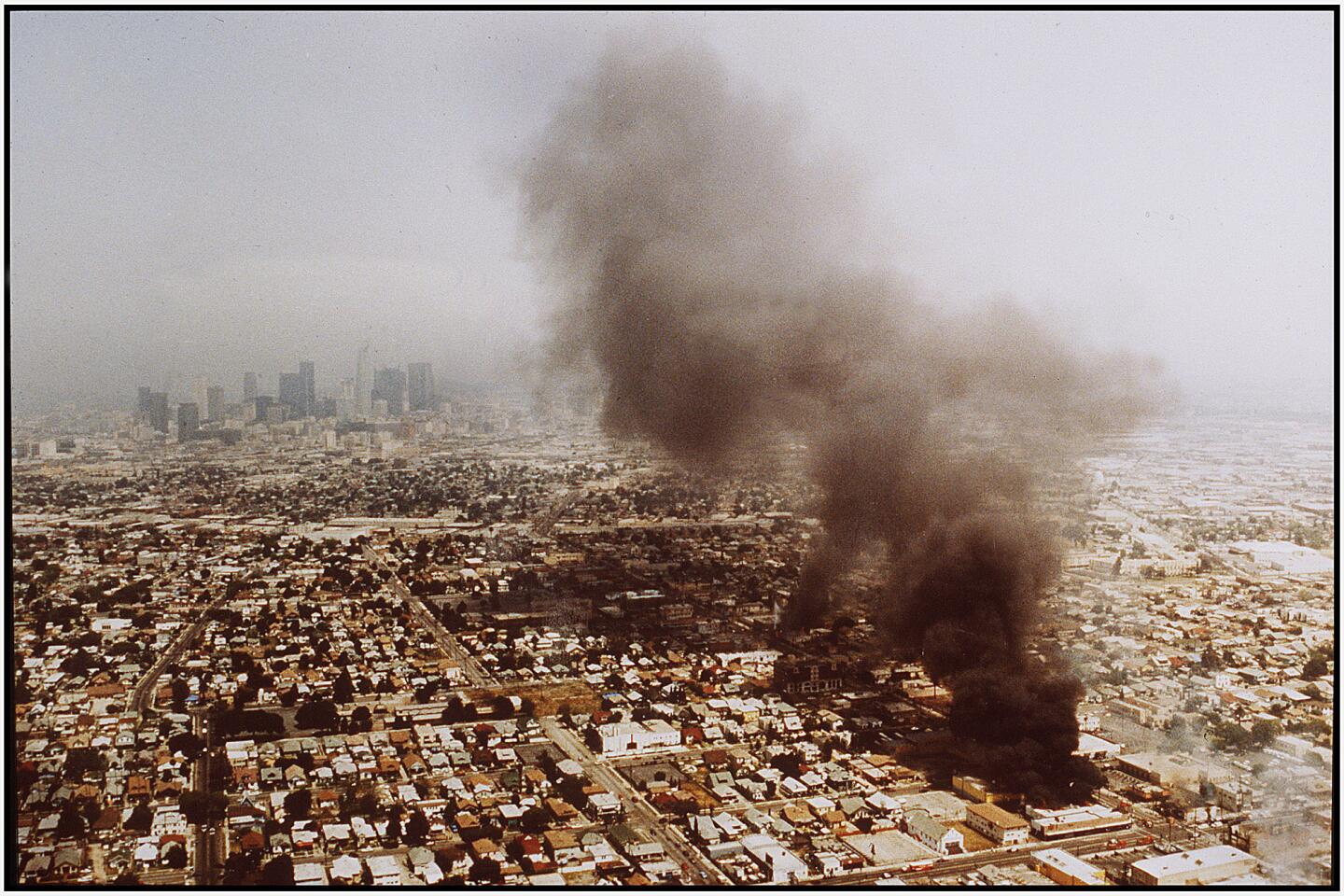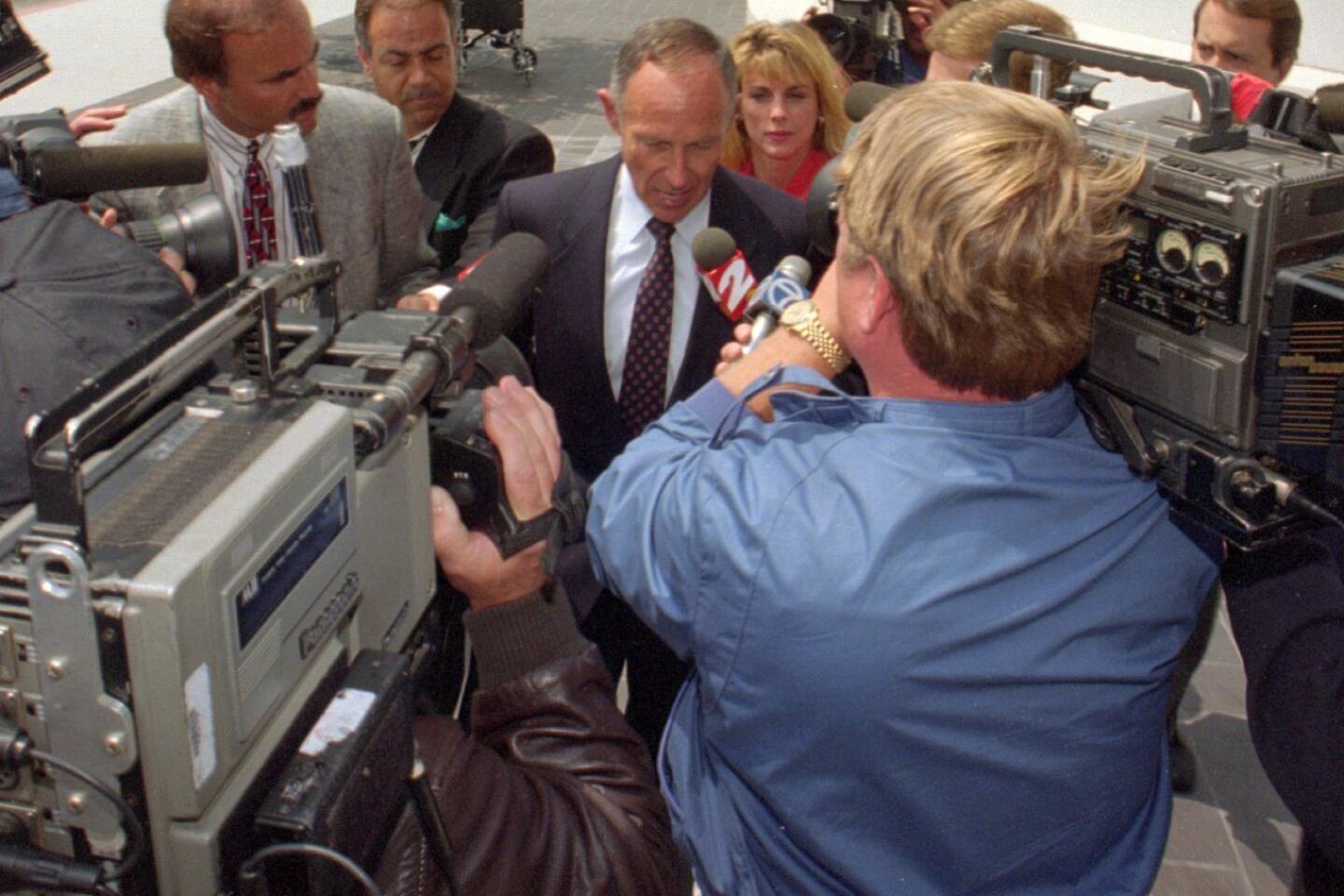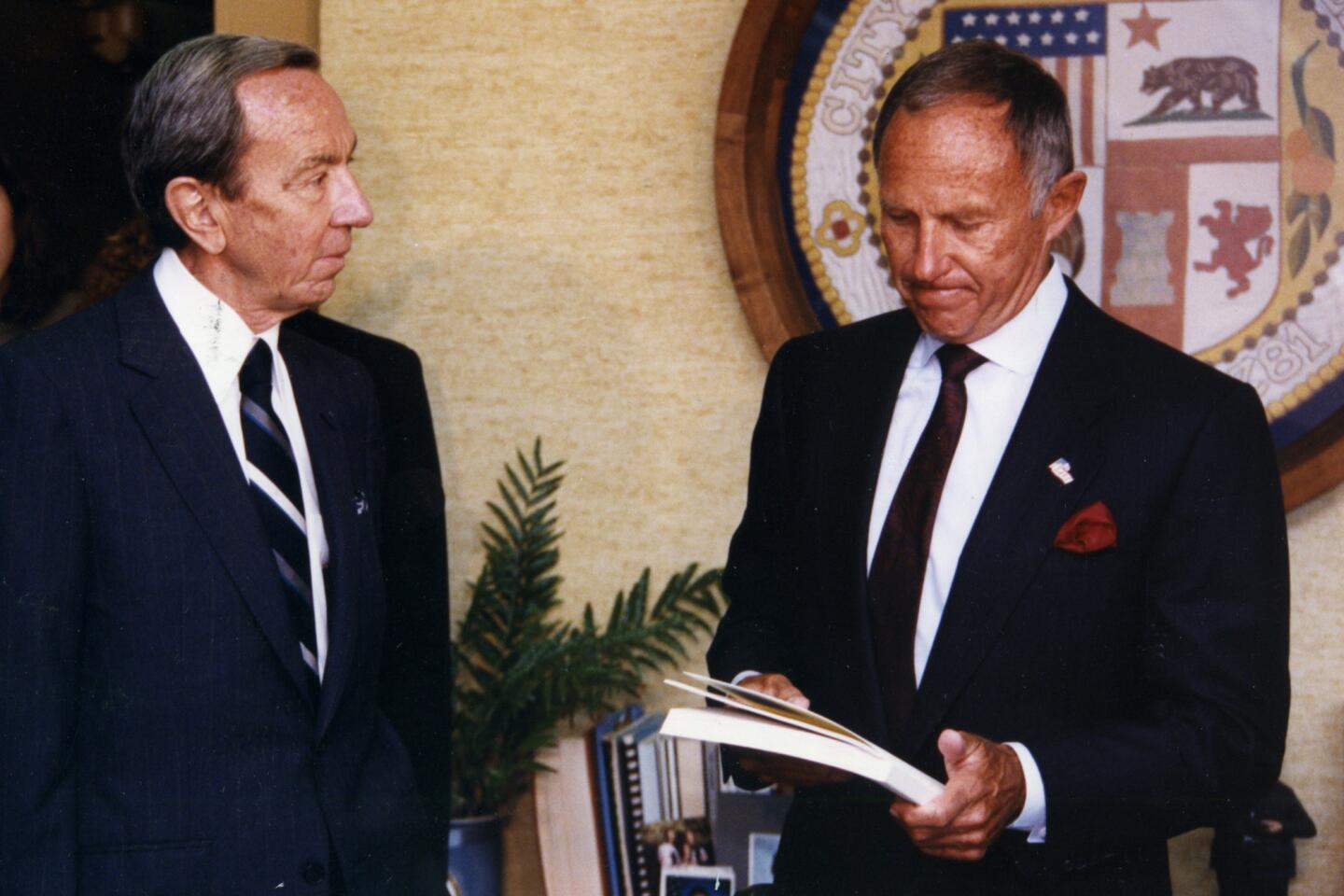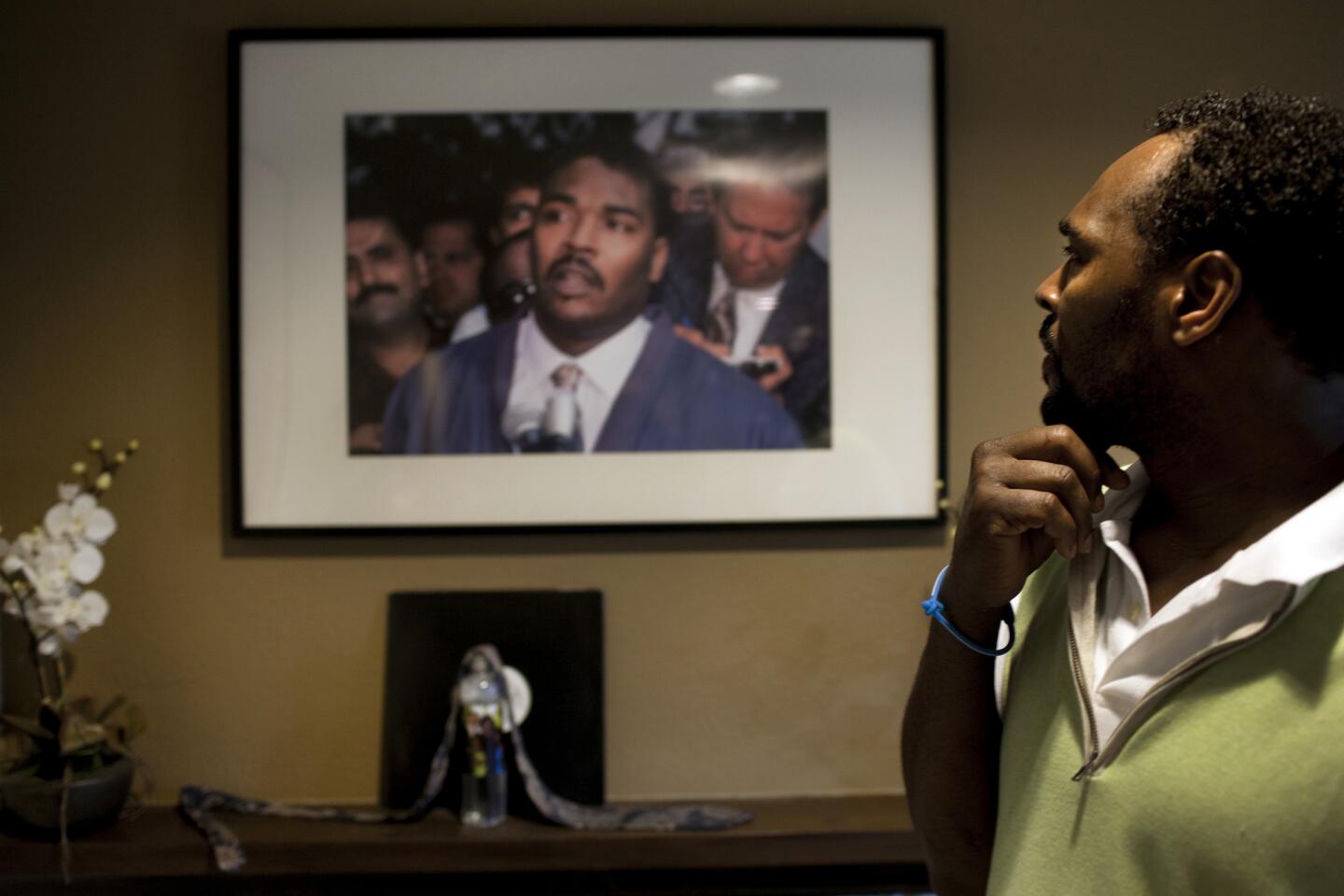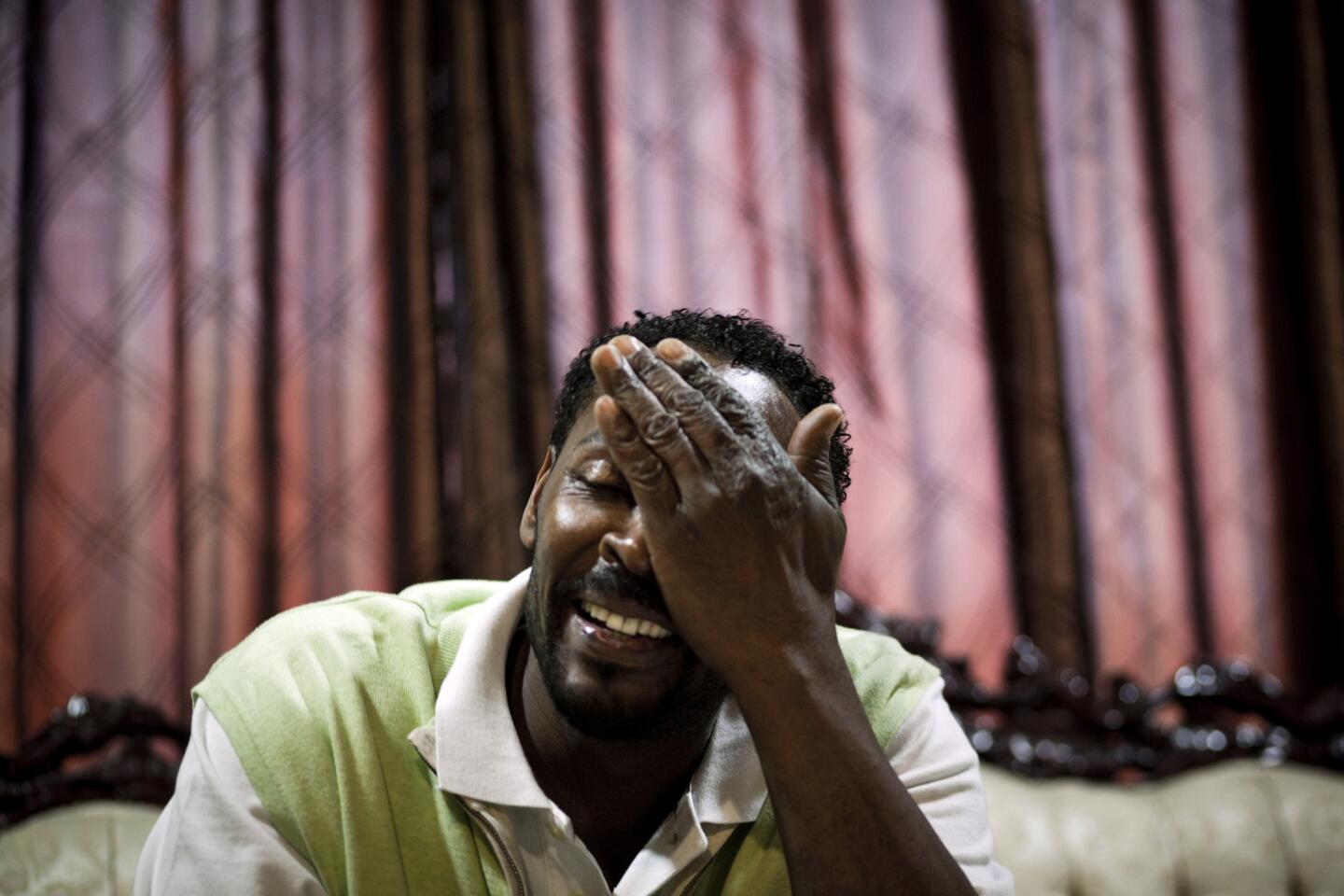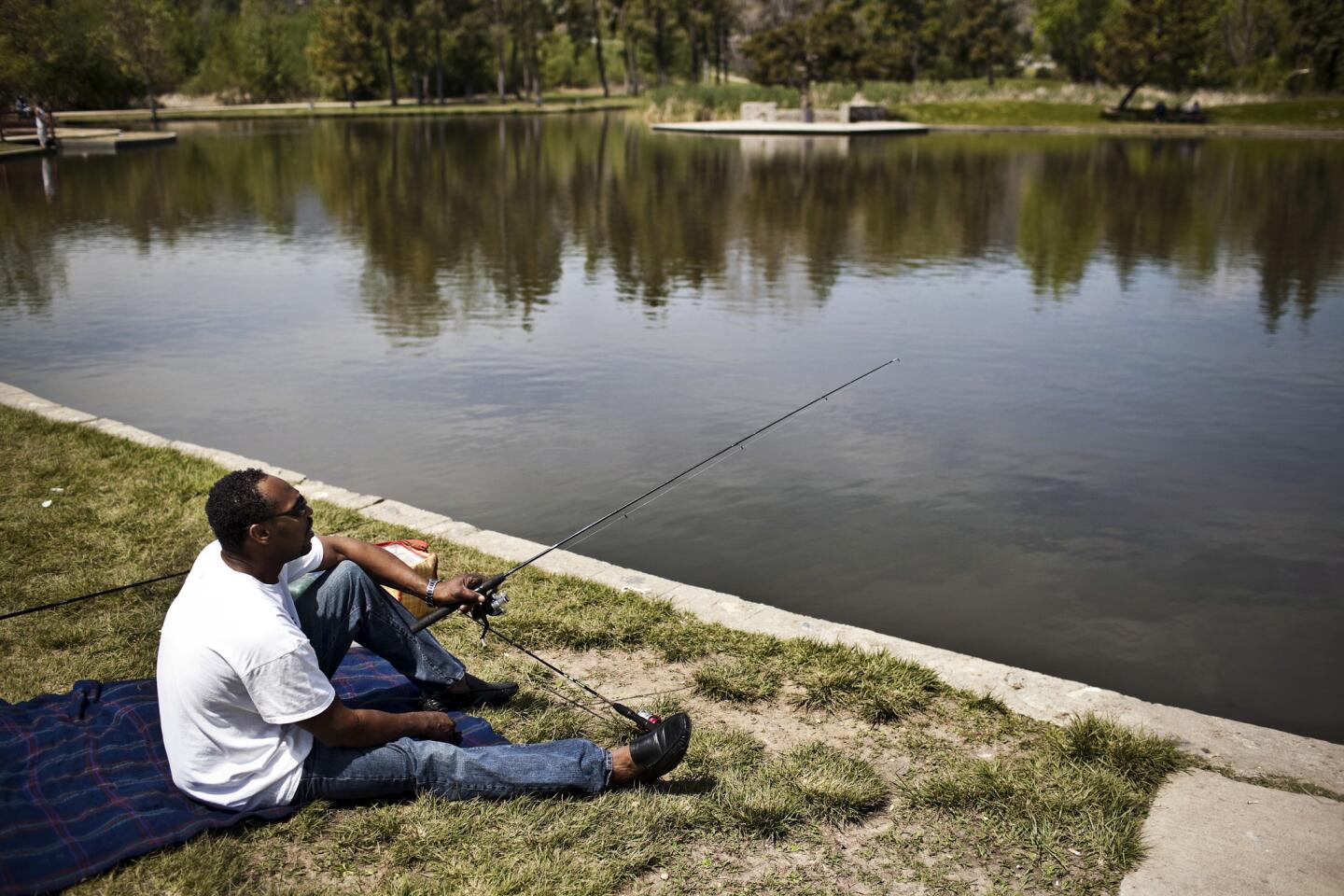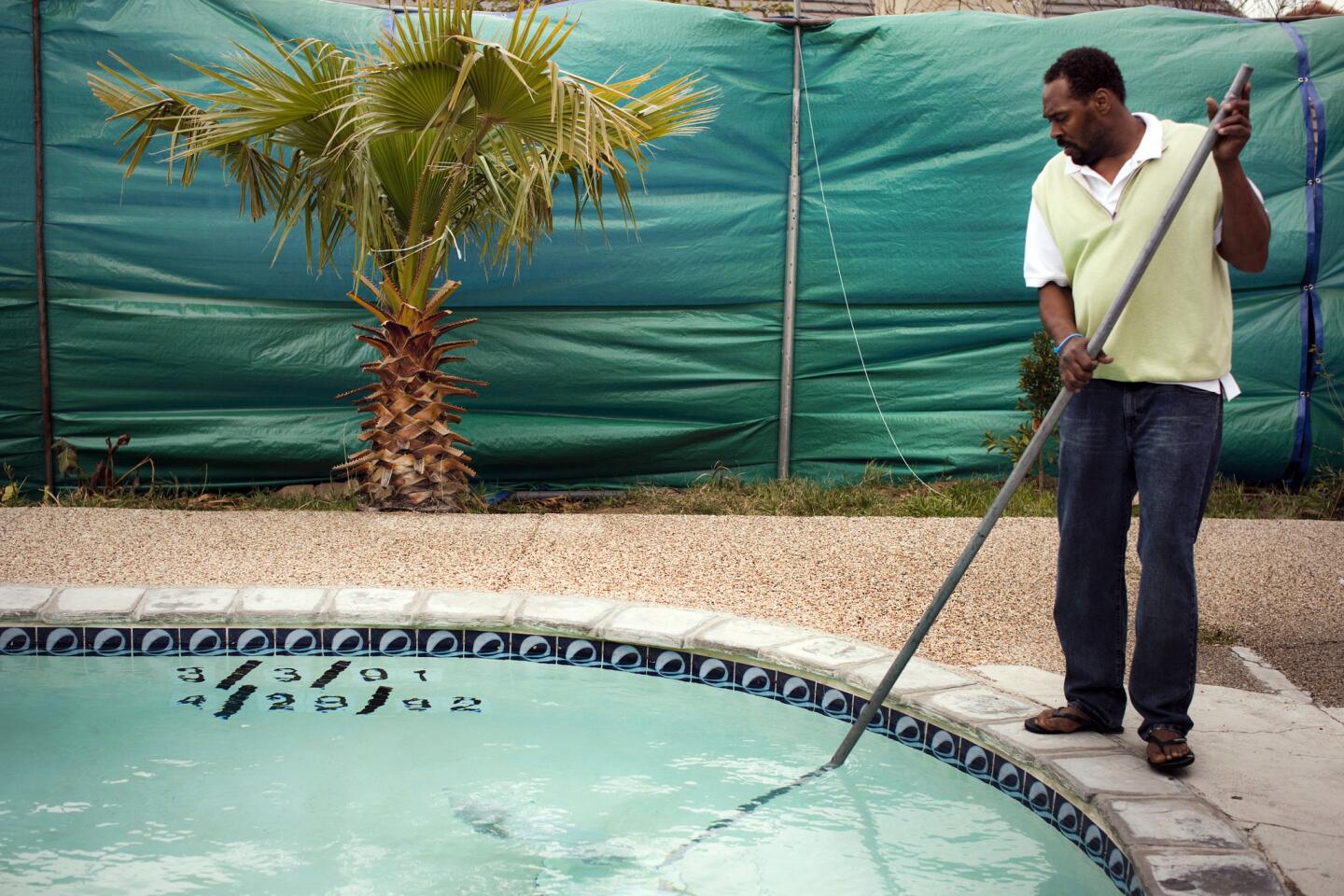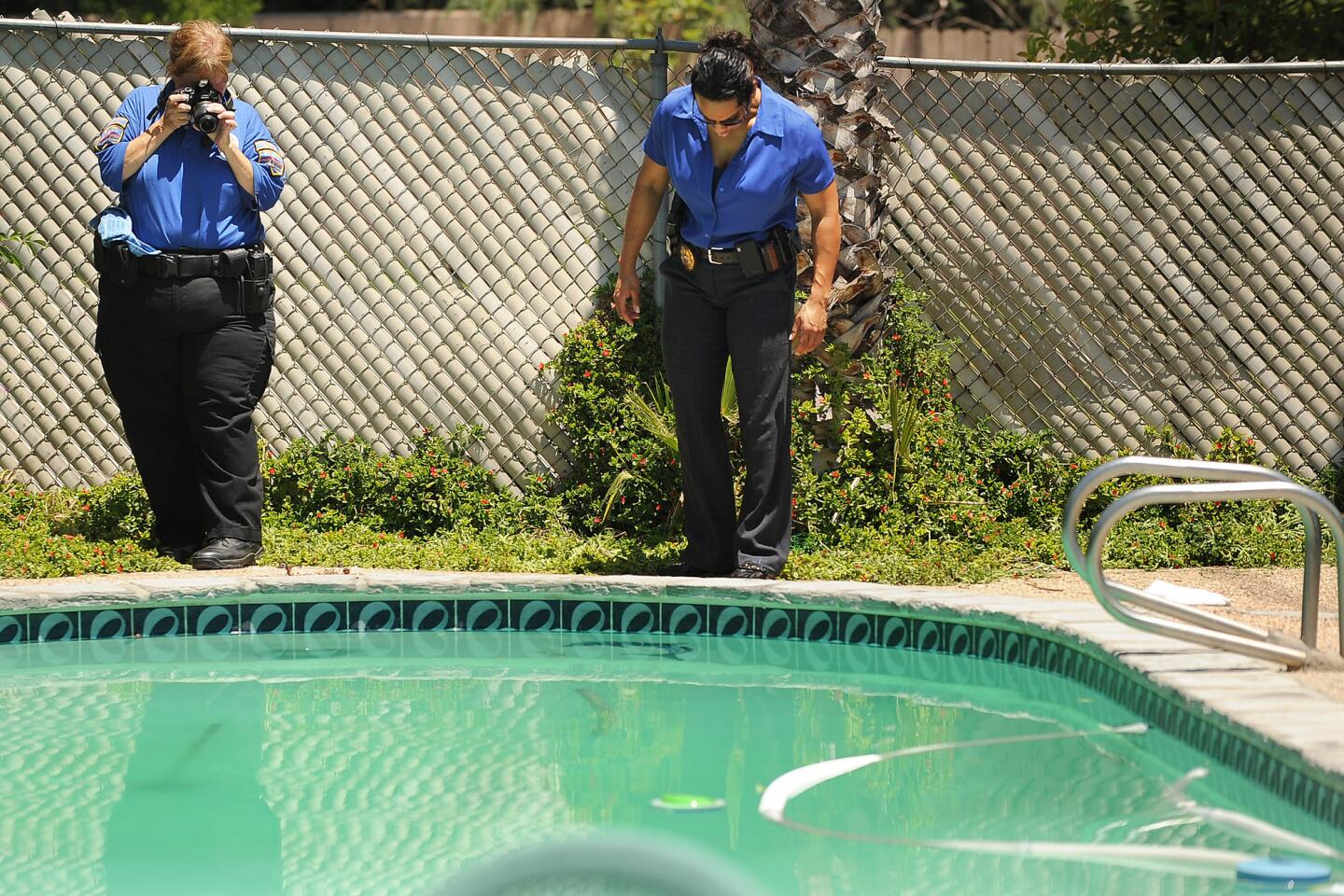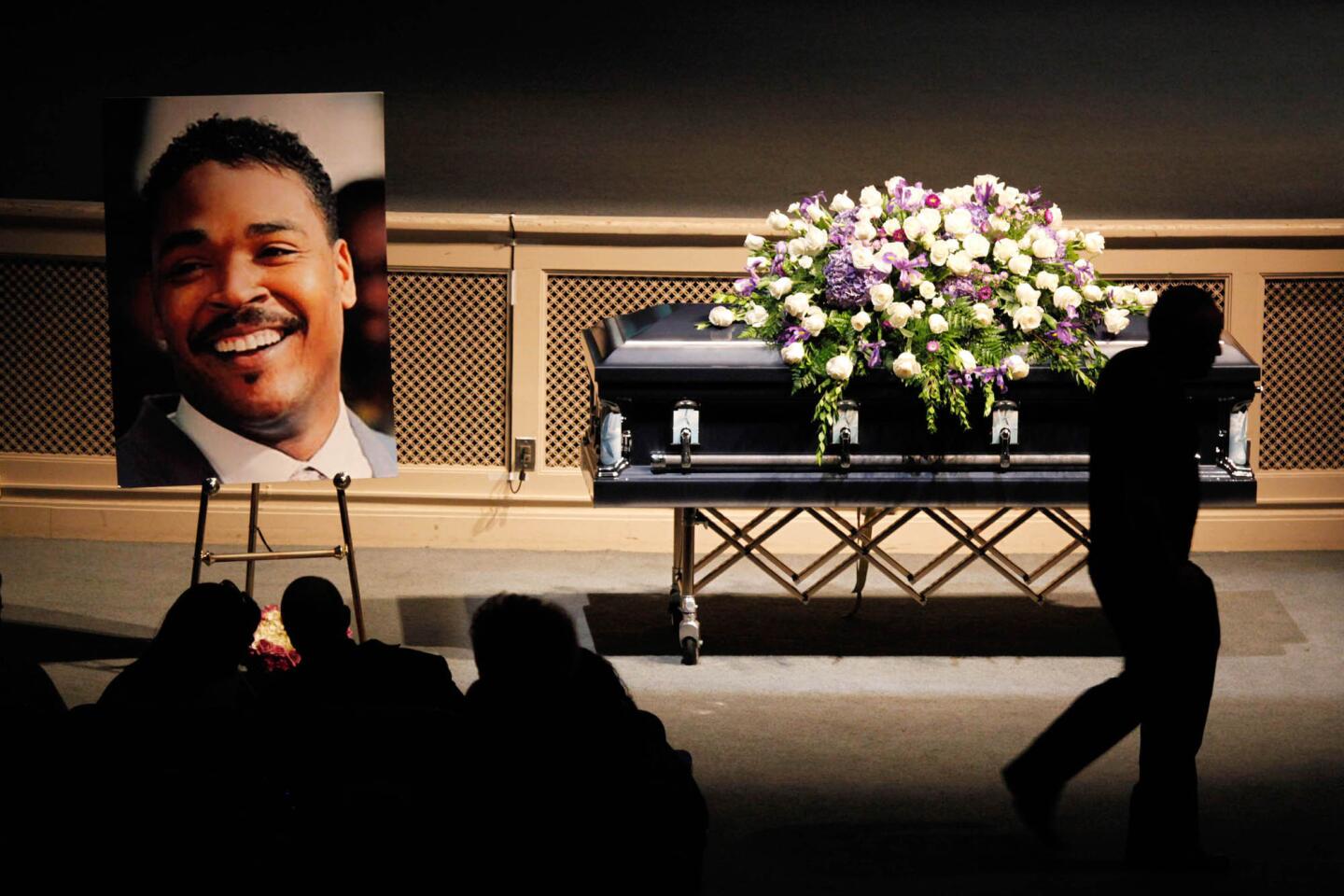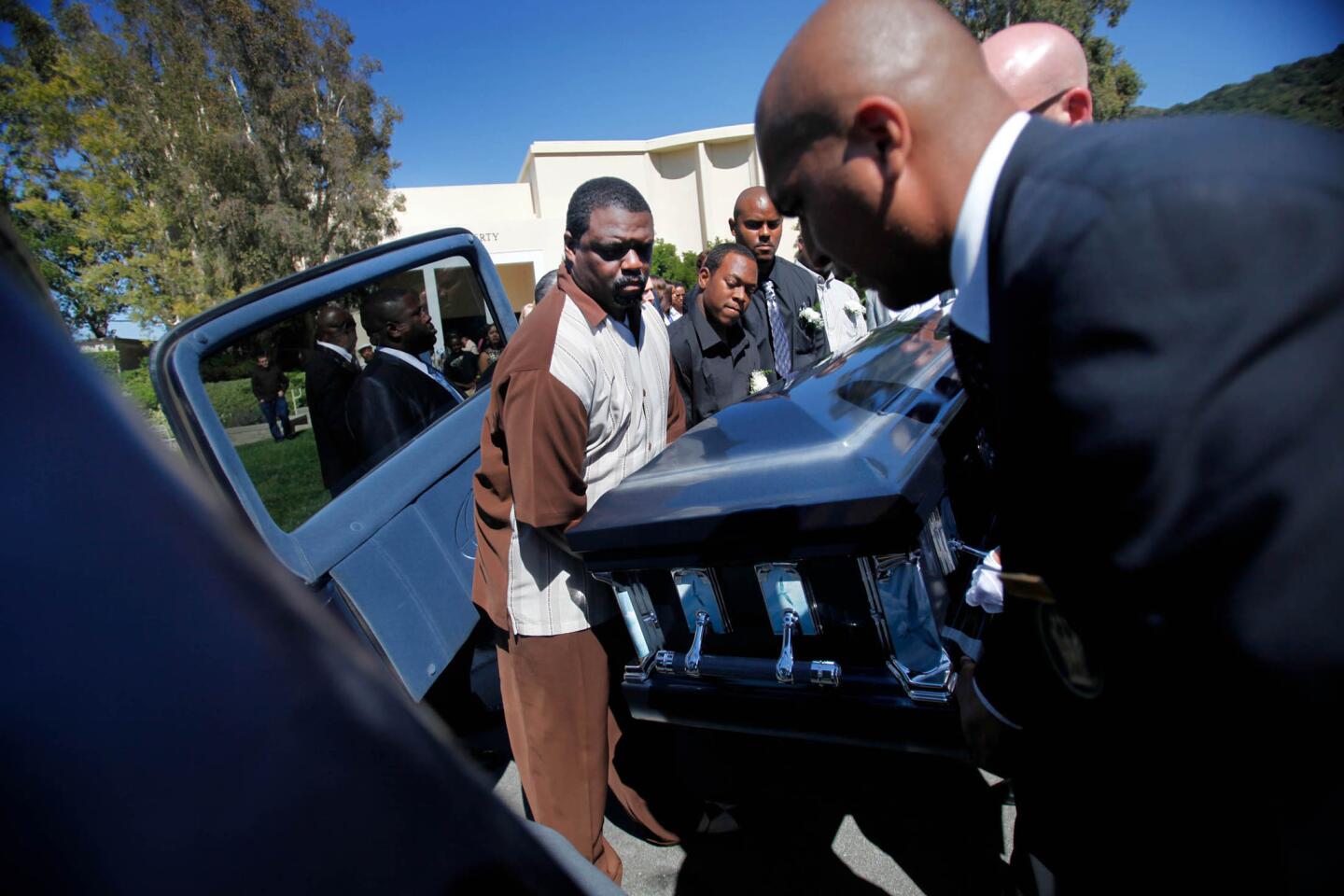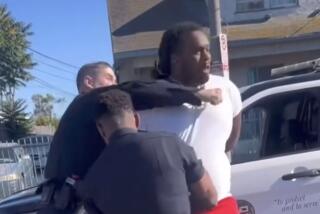2 views of Rodney King drawn by lawyers
- Share via
SIMI VALLEY — The attorney for one of four officers implicated in the beating of Rodney G. King broke from his colleagues Thursday, telling jurors that the officers who wielded their batons were “out of control” and that his client, Theodore J. Briseno, had tried to stop them from repeatedly kicking and pummeling King.
“He sees Mr. King moving and he wants Mr. King flat so Mr. King can be put into custody,” said John Barnett, Briseno’s lawyer. “He wants the beating to cease.”
As to the other officers seen in the widely viewed videotape of the incident, Barnett said Briseno’s “perception is that they’re out of control.”
Barnett’s dramatic statement came as prosecutors and defense lawyers in the trial of Briseno and three other police officers gave contradictory portrayals of King--that of an innocent victim of an unprovoked police attack or of a violent man whose beating resulted from his refusal to follow orders.
After a year of debate and pretrial hearings, Thursday’s opening statements marked the first time that the two sides formally presented their versions of the incident that touched off a major scandal within the Los Angeles Police Department.
As befits the worldwide attention given the case, hundreds of television, radio and print media representatives jammed the small East County Courthouse in Simi Valley, where the case was moved in hopes of finding an impartial jury. Dozens of uniformed Ventura County deputies stood guard as an elaborate metal detector system was set up to examine courtroom spectators.
Despite some common threads woven through the defense arguments, it became clear midway through the day that the officers are far from united in presenting their case.
Barnett at first indicated that he might not deliver an opening statement. But after his colleagues had addressed the jury, he stepped forward and signaled a willingness to go it alone.
While Briseno appears on the videotape to be kicking King in the head, Barnett said as other officers seemed to be losing control, his client used his foot to hold King down in an attempt to end the beating.
“He’s not stomping but attempting to place his foot down,” Barnett said of Briseno.
Later, speaking to reporters, Barnett said the other officers were swinging their batons “at a furious pace” and Briseno worried that he might be struck.
But attorneys for Officer Laurence M. Powell and former Officer Timothy E. Wind strongly denied that they were “out of control.” Rather, they contended, their clients applied the batons exactly as they had been trained by the Los Angeles Police Department.
“It’s a classic example of proper form and proper control of the batons,” said Paul DePasquale, attorney for Wind.
Terry White, the lead prosecutor, disputed Barnett’s assertion that Briseno was only trying to hold King down with his foot to stop the beating. Instead, White maintained that Briseno kicked King. “That’s not my idea of assistance” for the victim, White said.
The prosecution began its presentation with what undoubtedly will stand as the trial’s key piece of evidence: the graphic, 81-second videotape shot by amateur cameraman George Holliday. Broadcast around the globe, the tape shows officers raining more than 50 blows on King as he lay on the ground in a Lake View Terrace neighborhood.
While the beating of King, who is black, by the white officers was widely interpreted as having racial overtones, no references to racial bigotry emerged during the opening statements and it is unclear whether they will be raised during the trial.
As prosecutors and defense lawyers began to lay out their strategies, it became clear that the cases will turn on the widely divergent interpretations each side has given to the video’s grainy, often out-of-focus images.
Prosecutors called the beating “unnecessary and unjustified,” even though they acknowledged that King was drunk on the night of the beating, and had led police on a wild chase through the San Fernando Valley at speeds greater than 110 m.p.h.
“Whatever Rodney King was, or whatever Rodney King did, it did not justify what you saw on this videotape,” White said.
“You have a man who was down, a man who was not resisting, a man who was not aggressive,” White added, pointing to the images on a large-screen television placed next to the jury box.
“And yet, those blows from those batons continue and continue and continue for no justifiable reason.”
But defense attorneys focused on what they said was King’s erratic behavior as he stepped out of his Hyundai, contending that he repeatedly refused to obey officers’ commands and posed a danger to them as they tried to make an arrest.
“Timothy Wind dealt with the situation as it unfolded in accordance with his experience and training,” DePasquale told the jury in summarizing a likely defense posture for all of the officers. “He had learned how to handle himself in the Los Angeles Police Academy.”
And, the attorney added, “his situation was one of fear and frustration, and not pleasure in inflicting injuries.”
Briseno, Wind, Powell and Sgt. Stacey C. Koon are charged with assault in the beating. Koon and Powell also were charged with filing false reports. All have pleaded not guilty.
If convicted, the men face sentences ranging from four to eight years in prison.
Turning away from the beating, prosecutor White at one point attempted to impugn the character of Koon and Powell, telling the jury that the officers had attempted to minimize the degree of King’s injuries in the reports they filed.
In their opening statements, several defense lawyers focused their arguments to the jury on the high-speed chase before the incident. They emphasized that King’s blood-alcohol level was more than twice the legal limit, and that police believed that King was under the influence of PCP, a dangerous drug that can trigger violent behavior.
They walked the jury through the options available to the officers in subduing a dangerous felon. And they stressed that King was struck and kicked only after he repeatedly refused to obey their commands to lay still on the ground, face down, with his arms and legs extended.
Darryl Mounger, Koon’s attorney, said: “He (Koon) is experienced and he is in charge of his officers. But the evidence will show that he was not in charge of this incident. The only one person who was in charge of this incident was Rodney Glenn King.”
Powell’s attorney, Michael Stone, told the jury that King not only refused to lay still, but repeatedly tried to rise from the ground and stand up--actions that the officers took as threatening.
Using an FBI-enhanced copy of the videotape, coupled with still photographs and glossy overlays, Stone contended that King can be seen attempting to rise.
“In the hundredths of a second between this photograph and this photograph,” Stone said at one point, “Mr. King is again coming up off the ground, and he charges Officer Powell.”
Stone said his client immediately viewed King’s actions as a threat. “When he (Powell) was assaulted, he drew his baton,” Stone said.
King, in an interview with prosecutors, said he was not trying to fight with the police, but instead attempting to flee out of fear for his life.
The first witness to testify was Holliday, the amateur cameraman who was awakened from his sleep and moments later memorialized the incident on his video camera. The tape was entered into evidence Thursday and labeled “People’s Exhibit No. 1.”
Holliday was followed on the stand by Bryant (Pooh) Allen, a passenger in King’s car that night. He insisted that although King acted bizarre and erratic, he was not drunk. He also said that while he could not see the beating, he can still remember King “howling” and “screaming.”
Allen said he recalled the “sounds of batons . . . like bones being cracked.”
Among those attending the trial were representatives of the National Assn. for the Advancement of Colored People, who voiced concerns about the makeup of the 12-member jury. All of the jurors are white, except for one Latina and one Asian-American woman.
Also in attendance were Clifford Ruff, legal director for the Los Angeles Police Protective League; police defense representatives for the accused officers; King’s attorney, Steven A. Lerman, and a clerk for Judge Bernard J. Kamins, the original trial judge who was taken off the case last year.
More to Read
Sign up for Essential California
The most important California stories and recommendations in your inbox every morning.
You may occasionally receive promotional content from the Los Angeles Times.
